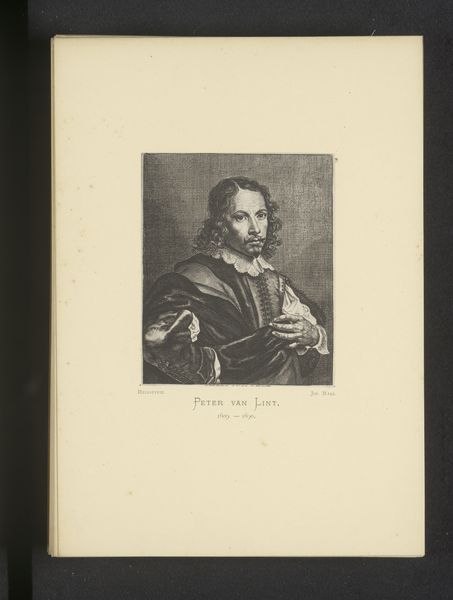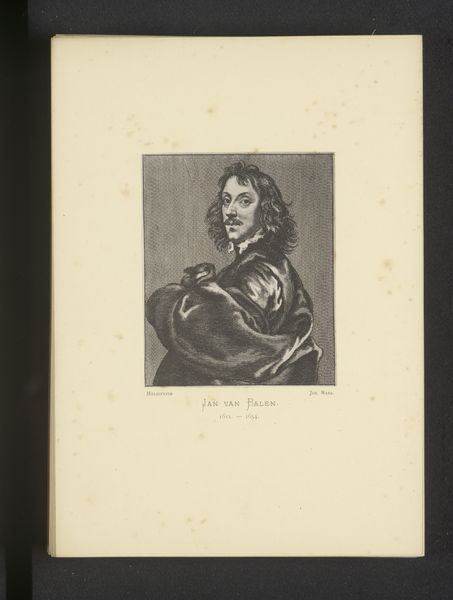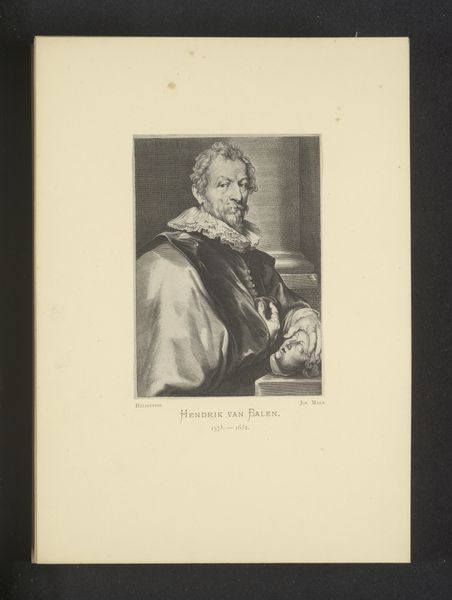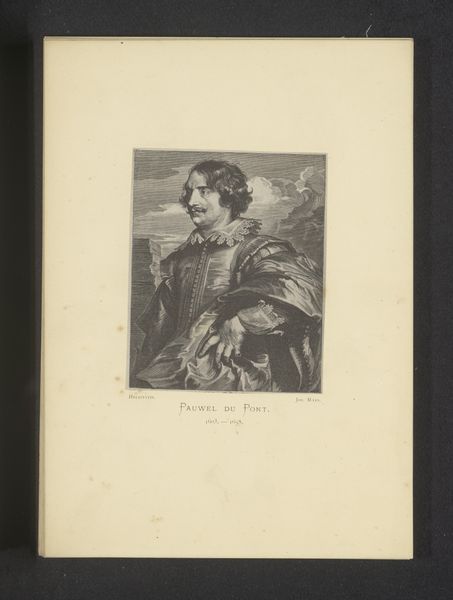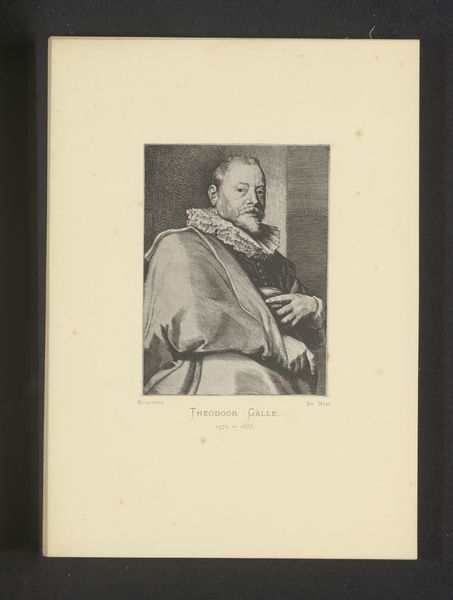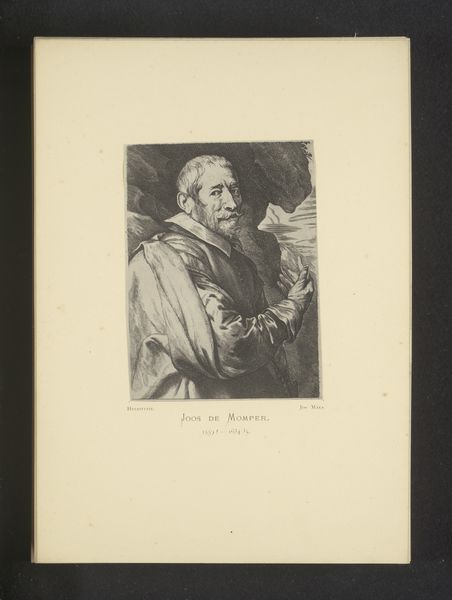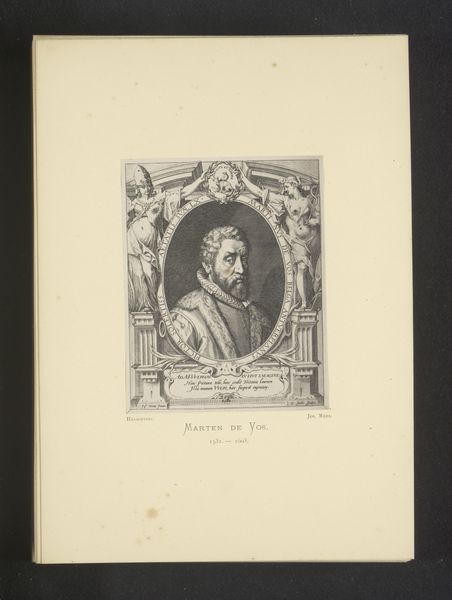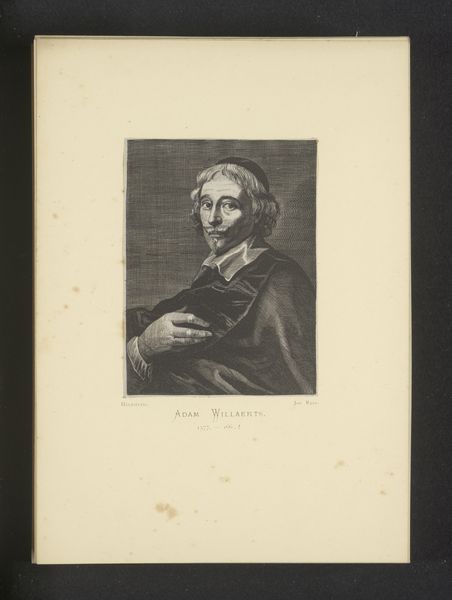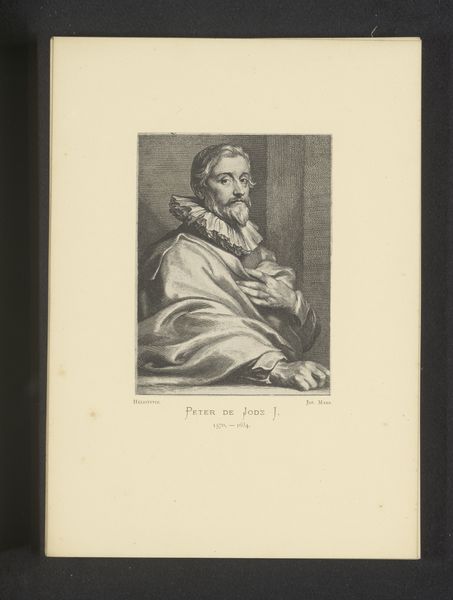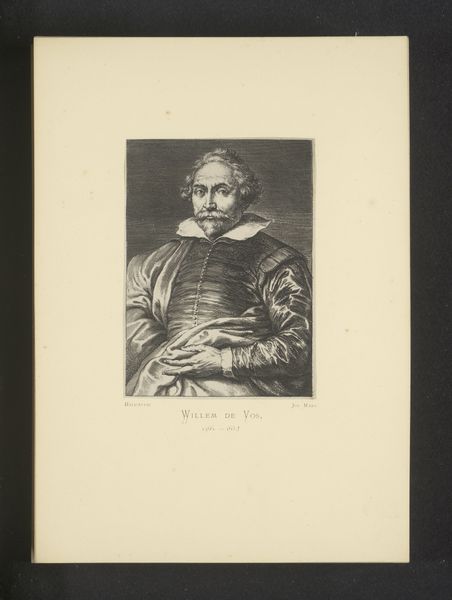
Reproductie van een gravure van een portret van Adam de Coster door Pieter de Jode (II) before 1877
0:00
0:00
Dimensions: height 117 mm, width 91 mm
Copyright: Rijks Museum: Open Domain
This engraving, a reproduction of a portrait of Adam de Coster by Pieter de Jode II, was made by Joseph Maes in the 19th century. It's a small work, printed on paper, and rendered with remarkable precision. The process of engraving is key here. It involves cutting lines into a metal plate, applying ink, and then pressing the plate onto paper. The resulting print captures a wealth of detail, from the texture of de Coster's clothing to the subtle gradations of light and shadow on his face. The act of reproducing an earlier portrait speaks to the changing status of images in the 19th century. Engravings like this made art more accessible, turning unique paintings into reproducible commodities. This connects to broader issues of labor and class. While the original portrait might have been commissioned by the sitter, this engraved copy democratized the image. It brought it into the homes of those who could not afford an original painting, but still desired access to culture. The materiality and the making – the skilled labor of the engraver, and the cultural context of reproduction – are central to understanding this modest but meaningful work.
Comments
No comments
Be the first to comment and join the conversation on the ultimate creative platform.

